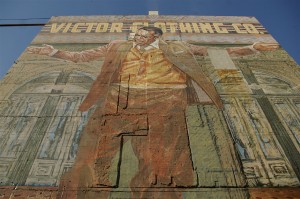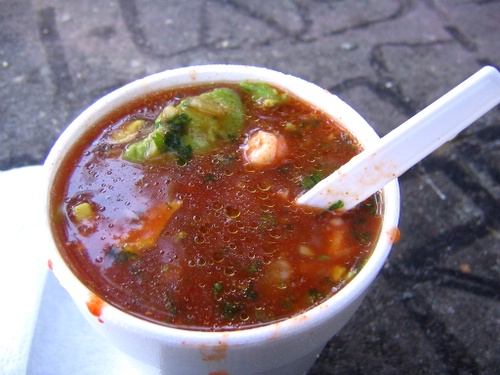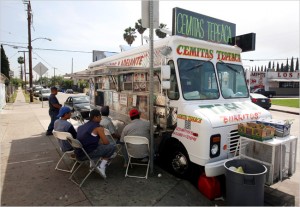
The East Los Angeles cultural community and Self Help Graphics & Art held press conference Friday to seek outside help, and demand answers from Los Angeles Archdiocese.
The sale of the building that for now is the home of Self Help Graphics & Art, the East Los Angeles cultural center that opened in 1978, spread quickly through the Latino Arts community this week. By Friday, a morning press conference was held in the parking lot with supporters and artists standing behind Self Help board president Armando Duron and L.A. First District County Supervisor Gloria Molina, and the mosaic Virgin of Guadalupe in the background. The sale is regarded as a slap in the face from the hands of the Los Angeles Archdiocese.
As been reported, the Sisters of St. Francis’ lawyers informed Duron of the sale July 3, the day after escrow closed, with no warning that the building was on the market. As he did all week with countless calls, Durango stated during the press conference that the Self Help board was assured in November of 2007 that the building was not to be listed in order to fulfill the priest sexual abuse scandal settlement.
According to spokespeople for the Archdiocese the owners of the building, the Sisters of St. Francis, requested the deed to be transferred to the Archdiocese and asked that it be sold due to a dwindling art center budget.
 When asked if that claim was believed, board and supporters said in union; “No!” “This is not the market to sell anything unless you need to,†said Stephen Saiz, Self Help board vice-president, and considered the scandal is causing “the fire sale.”
When asked if that claim was believed, board and supporters said in union; “No!” “This is not the market to sell anything unless you need to,†said Stephen Saiz, Self Help board vice-president, and considered the scandal is causing “the fire sale.”
“The Archdiocese’s blatant disrespect for the community is unacceptable,†Molina said during the conference. “I commit to working with Self Help Graphics & Art to mobilize my elected official colleagues and other community leaders to demand that the archdiocese tell us why they mishandled this situation – and how they plan to correct it.â€
The negotiation phase of the sale was so secretive that, according to Duron, the party purchasing the building (who visited the location Friday morning at 6:30 am) was told by the Archdiocese not to visit the site before the sale was final and that the art center was “only on the top floor.â€
The Bottom Line
In November 2007, the mosaic-covered building––with a stage and adminstrative offices on the upper floor and a gallery and workshops on the lower floor––was appraised at 1.5 million dollars. As the market softened, it was listed for 1 million.
Self Help has ben using the building rent free, and will continue doing so under new ownership until the end of the year, allowing a short time for a new location to be secured.
The deception will only be fueled when the final sale number appears like an apparition. Sources say the grounds were sold for $700,000–– a price tag many will feel was an attainable purchase price.
Speaking with Molina after the conference, she remarked how the County could have ear marked $250,000 from a cultural supporting discretionary fund, was already offered to be matched by several sources. Solid fundraising could have gone beyond the $700,000 final purchase price.
“If we were told and became part of the dialogue, a solution could have been found.,†added Molina.
While the Los Angeles Archdiocese are no longer accountable for the building, to the East Los Angeles cultural community, they are still accountable for the arts program that has been a springboard for Southern California Latino artists––some whose works are currently exhibited in national art museums.
That same community is now demanding a confession from the Los Angeles Archdiocese.
Previous: LAEastside
VFaL + LAT
Photos by Ed Fuentes/ VFaL










